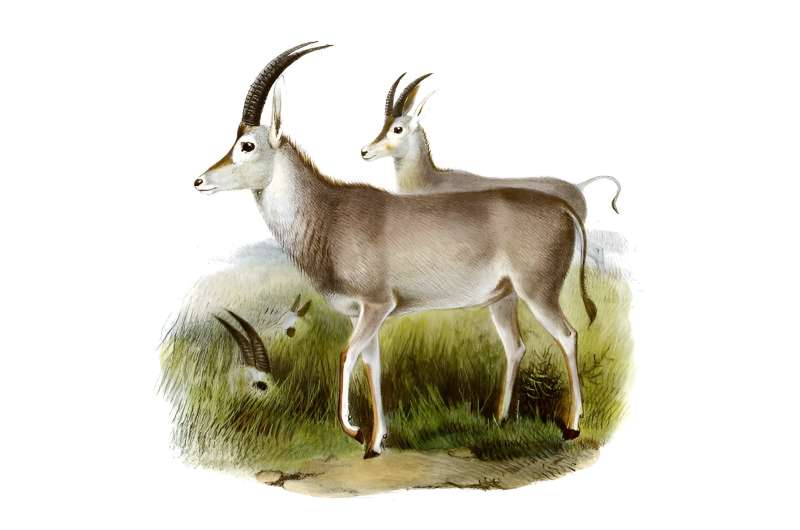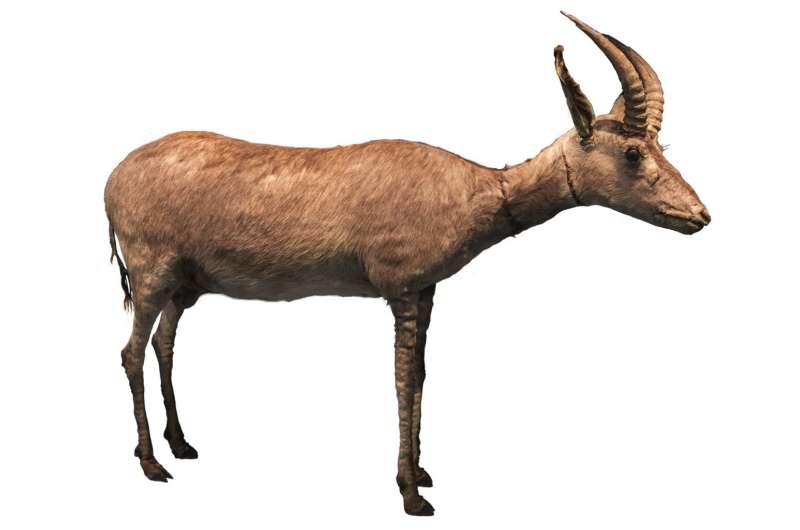Why European colonization drove the blue antelope to extinction
The blue antelope (Hippotragus leucophaeus) was an African antelope with a bluish-gray pelt related to the sable and the roan antelope. The last blue antelope was shot around 1800, just 34 years after it was first described scientifically.
The research team, which included Potsdam evolutionary biologists led by Prof. Dr. Michael Hofreiter, has now succeeded in obtaining a 40-fold high-coverage genome from a specimen at the Swedish Museum of Natural History. This is one of only five DNA-validated historical museum specimens of the blue antelope.
Low genomic diversity and population size are often considered a disadvantage, as they can lead to a reduction in the fitness and adaptability of a species. "However, the blue antelope had a small population size for many millennia before it became extinct around 1800," Hofreiter explains.
"The fact that no inbreeding and only a few detrimental mutations were detected indicates that the species was adapted to long-term low population size," adds Elisabeth Hempel, who studied the blue antelope as part of her doctoral thesis at the University of Potsdam and the Museum of Natural History Berlin.
The analysis of the long-term population size also shows that ice-age climate fluctuations did not influence it. This is unexpected for a large herbivorous mammal, as these cycles should have led to changes in habitat availability. This result suggests that current models of long-term ecosystem dynamics in the region may need to be refined.

The researchers concluded from their results that species can survive for a long time with a small population size as long as they are not exposed to fast-acting disturbances. Consequently, the sudden human influence during European colonization of southern Africa in the 17th century likely played a central role in the extinction of the species.
In the course of the DNA analyses, two genes were also identified in the genome that could be responsible for the species' blue pelt color, to which the blue antelope owes its name. This was made possible with the help of state-of-the-art computational analysis software from the biotechnology company Colossal Bioscience, with which the researchers collaborated.
"As part of Colossal's ongoing focus on ancient DNA, genotype to phenotype relationships, and ecosystem restoration, we were honored to collaborate on the groundbreaking work of Professor Hofreiter and his team," said Ben Lamm, co-founder and CEO of Colossal Bioscience.
"The research objectives for the project allowed our teams to work together applying some of the latest Colossal ancient DNA and comparative genomic algorithms to learn what truly made the blue antelope the unique species it was."
The study is published in the journal Current Biology.
More information: Elisabeth Hempel et al, Colonial-driven extinction of the blue antelope despite genomic adaptation to low population size, Current Biology (2024). DOI: 10.1016/j.cub.2024.03.051
Journal information: Current Biology
Provided by University of Potsdam
Oldest paleogenome from the African continent tells of the extinction of the blue antelope

No comments:
Post a Comment